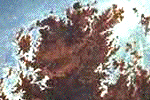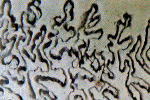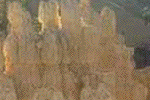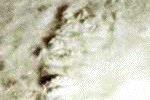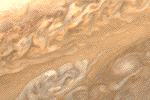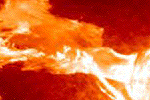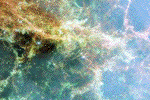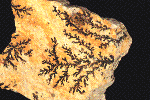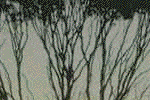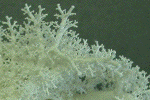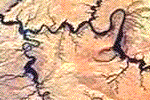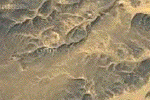| Here are some examples of fractals in nature. Once you know the
visual signature of fractals, finding your own examples is very easy.
To help learn to recognize fractals, we consider three ways objects can
exhibit fractality. Click each picture to magnify in a new window. |
| Rough boundaries |
|
| Bits surrounded by smaller bits |
|
| Branches off of branches off of branches |
|
| Fractals found in nature differ from our first mathematical examples in
two important ways: |
| (1) the self-similarity of natural fractals is approximate or statistical and |
| (2) this self-similarity extends over only a limited range of scales. |
| To understand the first point, note that many forces, some with random environmental
perturbations, scuplt and grow natural fractals, while
mathematical fractals are built by a single process. |
| For the second point, the forces responsible for a natural fractal structure are effective
over only a limited range of distances. |
| The waves carving a fractal coastline are altogether
different from the forces holding together the atoms of the coastline. |
| Or, as a student commented in
the very first offering of this course, "I thought I would learn the atoms making up a sheep
looked like little sheep. I was surprised to learn Nature is much more complicated than this." |
